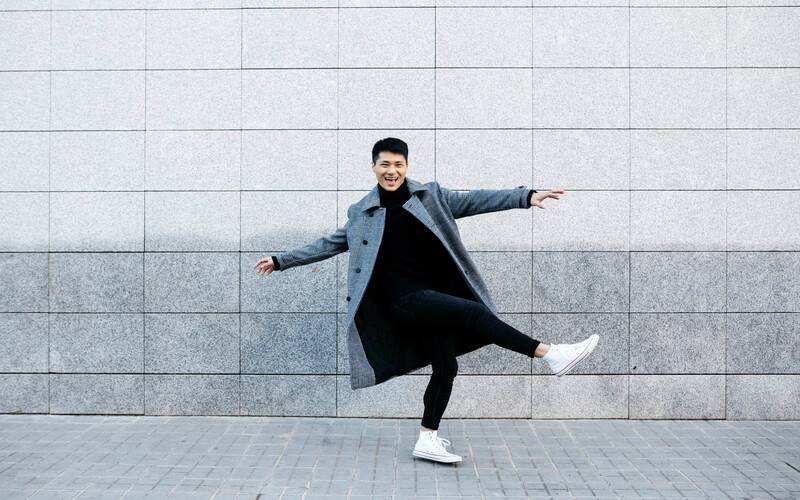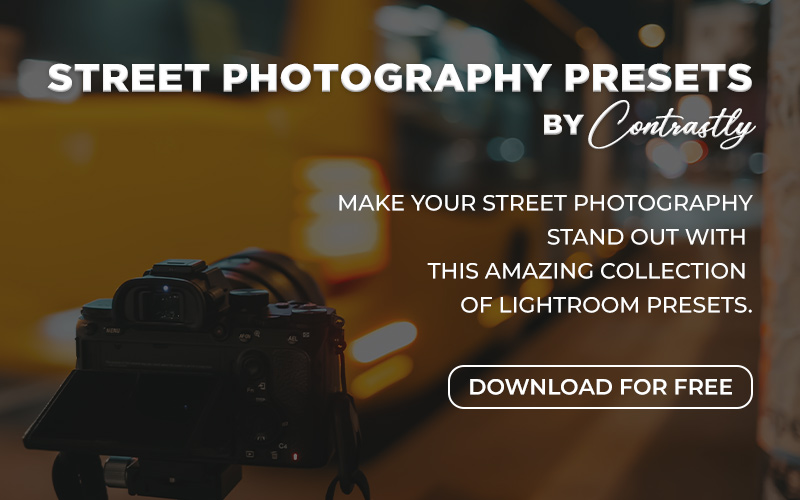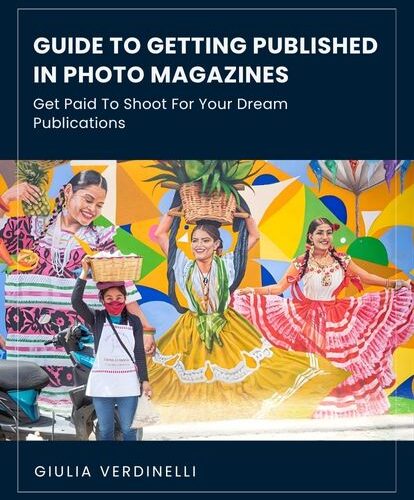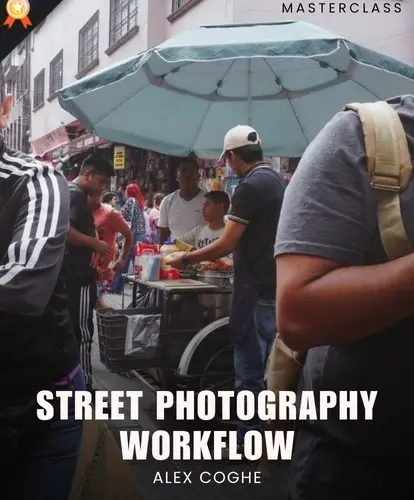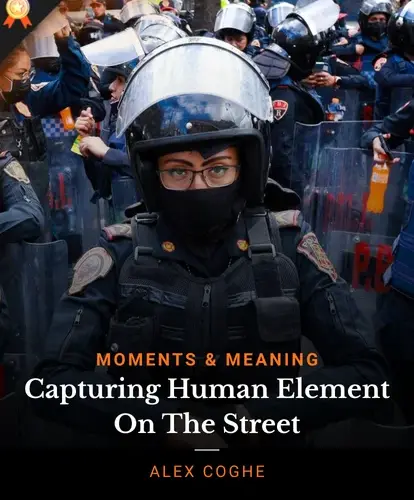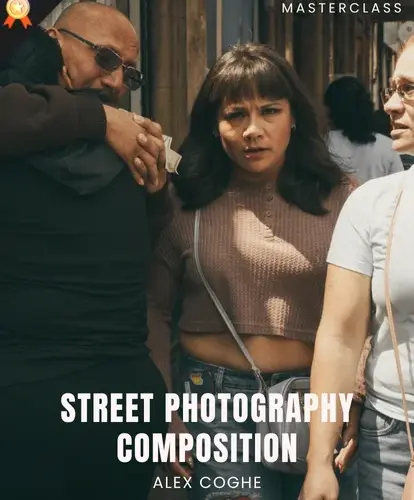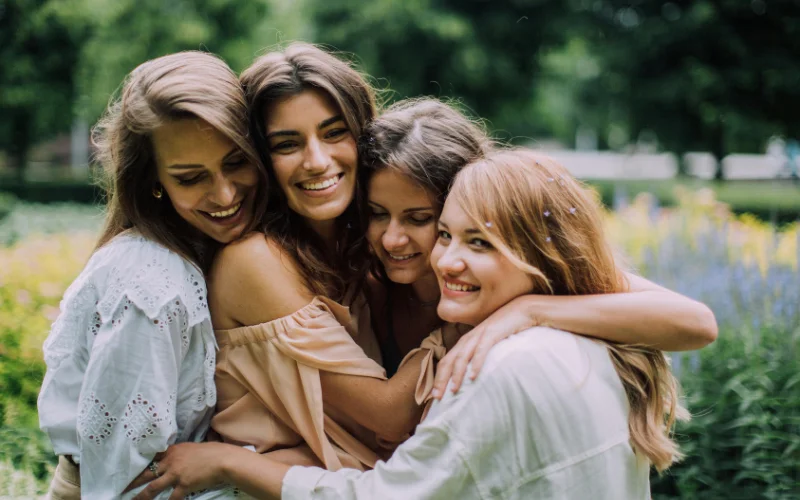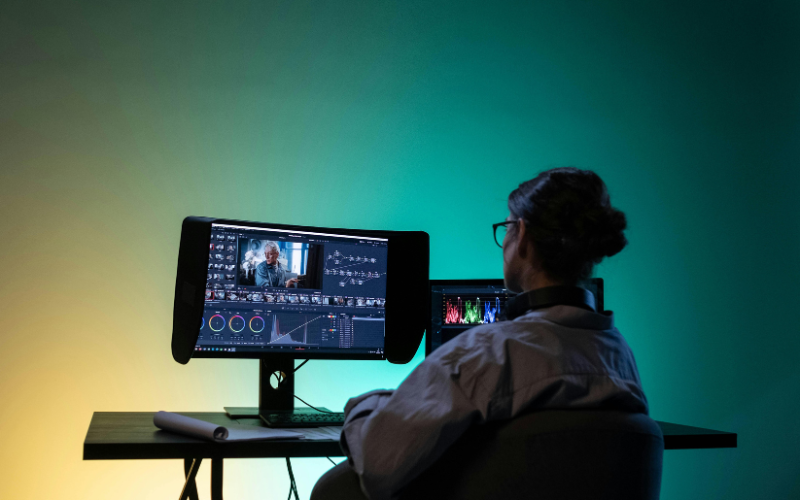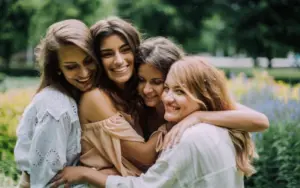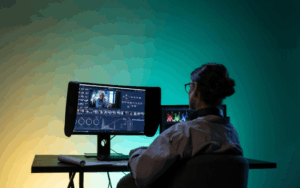Street photography has a niche among the types prevalent in the current world. It has many ardent supporters and enthusiasts. But what is street photography, and what makes it so special?
Why would photographers choose to capture candid moments of everyday life on the streets instead of shooting beautiful pictures in a serene location or the controlled environment of a studio?
In this street photography guide, we will explore the intricacies and motives behind shooting on the streets and provide tips and tricks to help new street photographers capture the perfect shot.
Table of contents
- What is Street Photography?
- Evolution Of Street Photography
- How To Get Started: Street Photography Tips
- How To Approach People For Street Photography
- What Makes Street Photography More Challenging?
- Professional Tips & Street Photography Camera Settings
- Food For Thoughts
- Things To Avoid For Mastering This Art
- Conclusion
What is Street Photography?
Street photography is all about capturing random encounters. In this type of photography, you, as a photographer, can expose yourself to different situations and capture the raw emotions of everyday people from all walks of life. Shooting on a street or near an urban location is not necessary; capturing pictures in public places also falls under this photography genre.
Learn techniques and enhance your photography skills with this street photography PDF guide.
Evolution Of Street Photography
Street photography has been practiced since photography’s inception. As the invention of photography coincided with globalization and urbanization, street photography also gained a lot of momentum. As the first photographs were on the streets, we can surely say that photography started with street photography.
Back in the day, photographers used to work on ISO 25 films and endured the long and grueling process of developing, printing and storing them. Full-frame digital cameras can effortlessly capture several high-ISO images with little or no noise.
Also, in the early days, photographers exchanged prints with one another and collaborated to improve their techniques. The sharing of images among photographers and photography enthusiasts has been simplified thanks to numerous social media networks.
Many street photographers denounce using Flash, image editing, or photo enhancement software like Lightroom and Photoshop. But if we take hints from the past, photographers, too, have been manipulating negatives.
They even used flash in street photography, as evidenced by the samples of Jacob Riis, dating back to 1887.
Want to elevate your street photography skills? Check out this ultimate masterclass.
How To Get Started: Street Photography Tips
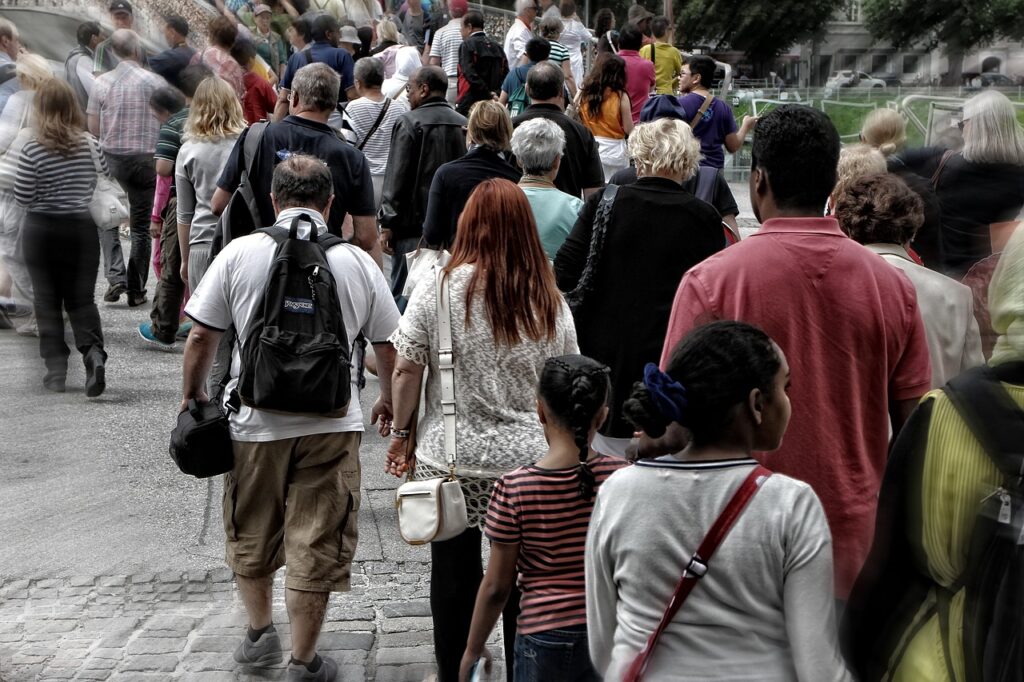
Given the vastness and intricacies involved, street photography is considered way more difficult yet exciting than capturing macros and stills of different objects. Some of the tips to help you perfect your street photography techniques are:
Use a wide-angle prime lens: Photography on the street is all about capturing the various subjects and elements interacting with each other. It is also the best stage to capture people in their candid moments. So you should try using a camera with a wide-angle prime lens to capture your subjects and the pandemonium. You should avoid using a zoom lens, as it robs your image of the objects surrounding your subject and makes your subject feel like he/ she is under surveillance.
Getting close: Use your wide-angle lens and approach your subject. You should be close enough to capture the details of his skin and the various emotions and facial expressions on his/ her face. This will help you relate your subject’s emotions to the surrounding objects and conditions. A 24, 28, or 35mm lens on a full-frame or crop camera is recommended.
Always carry your camera: You never know when and where you might witness a moment that moves you completely. So, the best option is to be prepared. Always equip yourself with a camera to never miss an opportunity to capture that “Kodak moment.”
Disregard negativity: People might often judge you when you try to capture images of the street. So, the best way is to disregard such negative comments and continue your work. As it is not illegal to click photographs in public places, you should never be bothered by what people say. You should always have your perspective in mind and carry on with your shoot, no matter what others say.
Asking for permission: Even though street photography is about candid moments, you never know if your subject might get offended by the act. So, rather than invading a person’s personal space in pursuit of the perfect candid moment, you should gleefully approach them and let them know your intention and purpose behind the shoot. In this way, almost everyone would accept your proposal or respond in kind.
Being respectful: The reason behind an action can solely judge its fairness. While shooting on the streets, you might even encounter a few beggars or homeless people. You would be tempted to click their pictures because they portray the conditions of the less fortunate and how society treats them. But while doing so, you must treat them respectfully and not make them feel like aliens or people to be frowned upon.
Juxtaposition: Street photography is fascinating as it renders irony, humor, and everyday beauty. In the street, you can juxtapose people with other entities and environment. You should look for signs and messages around you that contradict the actions of the people around you. You can even compare two subjects of complementing or contrasting traits and how they interact with their environment.
A story to pass on: The primary motive of every street photograph is to narrate a story. Your images should be able to capture the emotions of your subjects while their surroundings should lay a story for your subject. Thus, the amalgamation of your subject and environment should convey the individual’s emotions in the picture and his mental state.
For more tips on street photography, check out these blogs:
- New to Street Photography? 8 Things You Need to Learn
- Street Photography Guide to Light, Focus, and Approach
- Practical Tips for Successful Street Photography on Vacation
How To Approach People For Street Photography
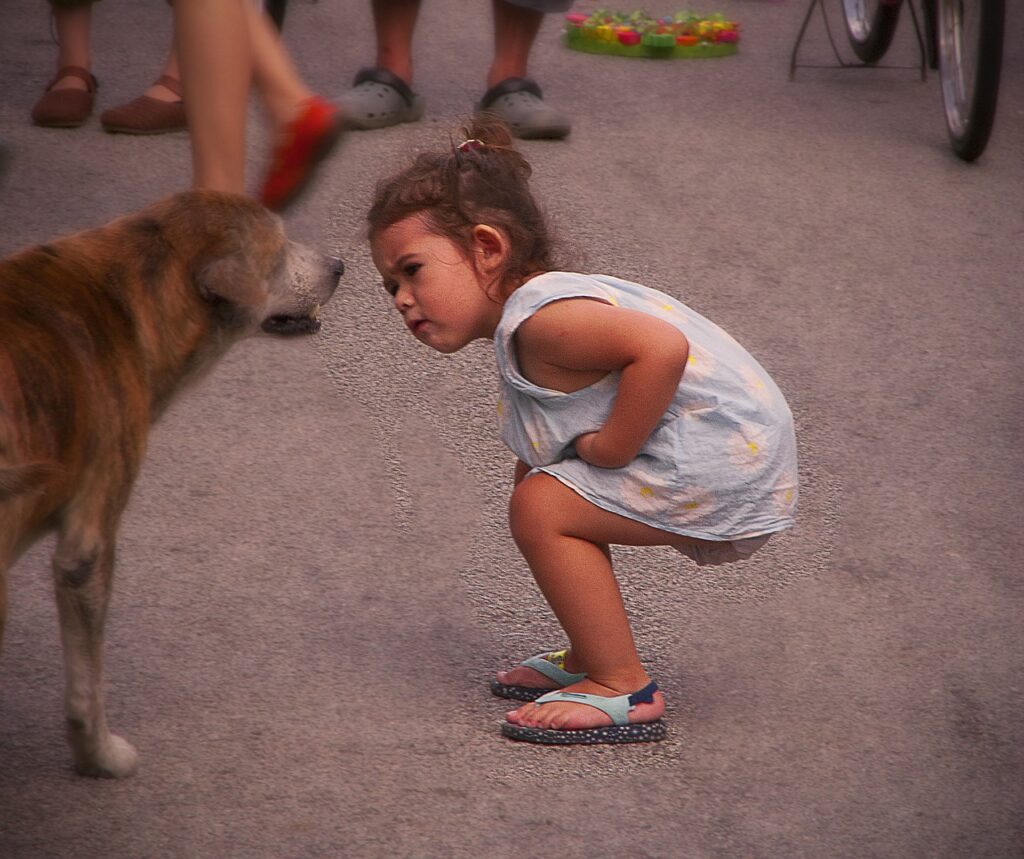
Street photography involves capturing images of complete strangers, but not all might welcome it. Even though photography is allowed in most public places, depending on the location, it might be prohibited.
You must ask for permission before doing any shoot. Also, if you feel shy looking through the eyepiece at the street and crowd, ask a friend to accompany you. It will help eliminate shyness and make the shoot a casual affair.
As a beginner, you should start photographing the crowd as a whole, and then you can even focus on various street performers or street vendors for your subject. While taking candid shots, you can interact with your subjects after photographing them and show the samples to your camera. Such a gesture would inspire them and also instill trust.
You should be confident while clicking a picture and respectful to the individuals in it. You should never photograph subjects without their consent or force them to be in one.
Looking for expert guidance on street photography? Learn from the best in this ultimate masterclass.
What Makes Street Photography More Challenging?
Street photography can depict a story in a single frame. So, the primary aim should be to find and correlate a situation with a story. In this endeavor, the challenging part is to pay attention to all activities around you and act quickly when an opportune moment arises.
Your camera should be ready for the perfect exposure setting to capture a moment in a snap without further ado. Another challenge of street photography is leaping into the unknown. Because of the sheer volume of your subject and the different interacting elements prevalent, you never know what to expect. You should perceive every moment with an open mind and try to capture its essence.
However, the most challenging part of street photography is approaching the subjects and capturing the candid moments of complete strangers. Few photographers secretly photograph people by hiding cameras and clicking pictures through their buttonholes.
Walker Evans implemented such a method in the 1930s and ’40s while photographing people in New York City. A few photographers find getting the subject’s consent morally wrong before clicking a picture. Few adopt the ‘fast shooter’ method to capture quick snaps of people, thus capturing candid moments of various subjects without being seen.
Also read: An Art World Lesson for Street Photographers
Professional Tips & Street Photography Camera Settings
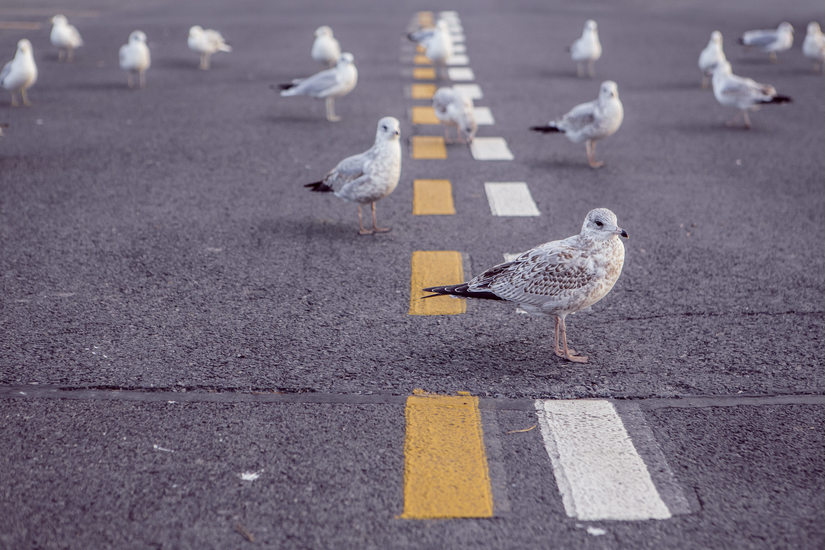
During the shoot, you need to be spontaneous and quick while shooting images; you need to select the optimum camera setting that provides you freedom over the camera exposure while allowing you to shoot instantly. Thus, the best setting and optimal shooting settings are:
Exposure mode – Program shift
Focus mode – Servo or Continuous
Shutter speed – 1/125sec or faster
Aperture – f/5.6
ISO – 400
Lens – 18mm to 200mm
Drive Mode – Continuous
White Balance – Auto
If you want to introduce some variety in your images, you can play with the camera aperture and shutter speed to introduce motion blur, create Silhouettes, and create the bokeh effect. If you shoot at night, you might need a tripod to capture images in low light and compensate for the long exposure.
Food For Thoughts
Now that you are well endowed with wisdom regarding street photography, it’s time to get inspired. Here are a few street photography quotes from some of the world’s most renowned photographers. Let’s see what they have to say.
If your photos aren’t good enough, then you’re not close enough.
Robert Capa
Photographers mistake the emotion they feel while taking the photo as a judgment that the photograph is good.
Garry Winogrand
To me, photography is an art of observation. It’s about finding something interesting in an ordinary place… I’ve found it has little to do with the things you see and everything to do with the way you see them.
Elliott Erwitt
It is more important to click with people than to click the shutter.
Alfred Eisenstaedt
I love the people I photograph. I mean, they’re my friends. I’ve never met most of them, or I don’t know them at all, yet through my images, I live with them.
Bruce Gilden
Seeing is not enough; you have to feel what you photograph.
Andre Kertesz
Also, check out interviews with famous street photographers:
- Thomas Leuthard Interview
- Blake Andrews Interview
- Shawn Nee Interview
- Alex Coghe Interview
- Michael Ernest Sweet Interview
Things To Avoid For Mastering This Art
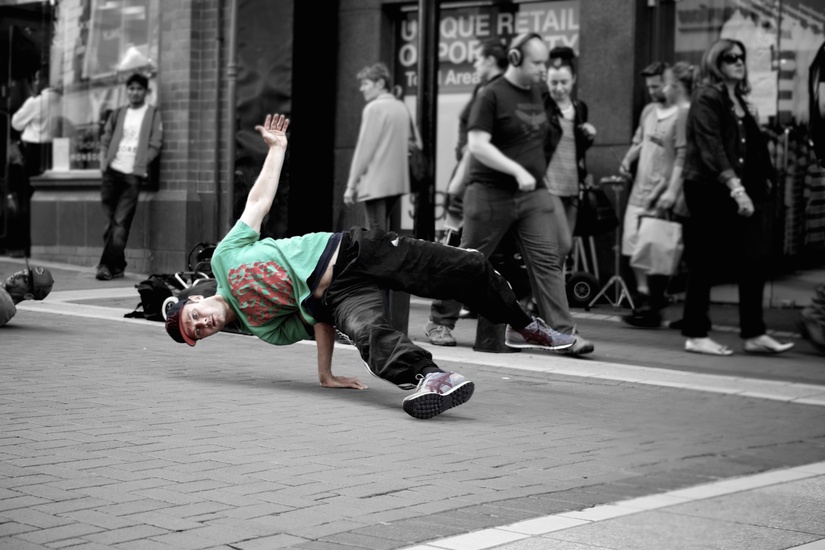
Beginners tend to commit many mistakes while shooting on the streets. These mistakes might be minute or trivial, yet they can hugely impact the quality of your image.
Being afar: When you are still shy about photographing complete strangers, you take their pictures from a distance. This diminishes the potential of the picture and fails to convey the story behind it.
Using excessive blur: It’s a common mistake to focus only on your subject when their surroundings completely go out of focus. Shooting using large-aperture lenses tends to create such issues, robbing your image of the intricacies surrounding the subject. When street photographers build their portfolios, they prefer street artists and vendors. However, since other street photography enthusiasts target similar entities, the subject matter can look monotonous.
Over-processing: Over-processing is a strict no-no. After you have captured an image, you should refrain from overusing contrast, saturation, HDR, or grains. Such processing makes the image look artificial and appalling.
Also read: Urban Exploration Photography: Shooting the Ruin, the Dirty, the Streets.
Conclusion
In a nutshell, street photography is quite fascinating. It enlightens you by providing a way to look at people and their everyday struggles. So, to capture people’s unaltered emotions, you should capture their images with the least intervention and utter sensitivity. Your image should tell something about the people in it and their surroundings.
Like this post? Check out more amazing photography content here.
